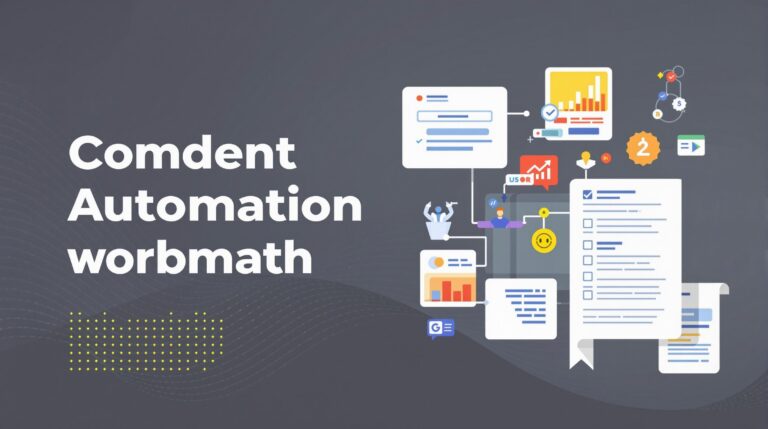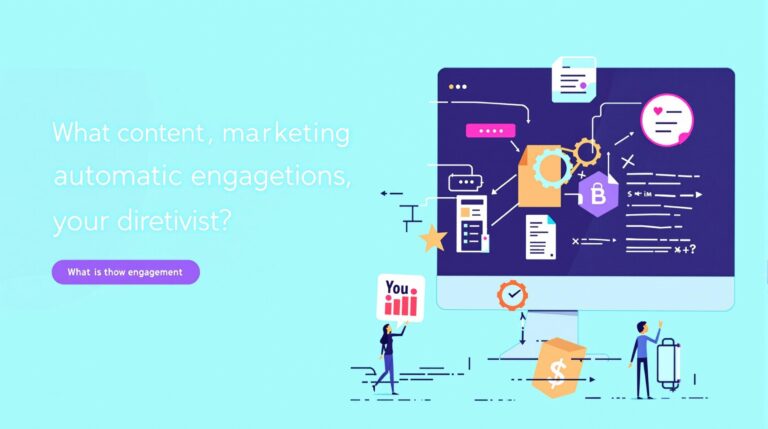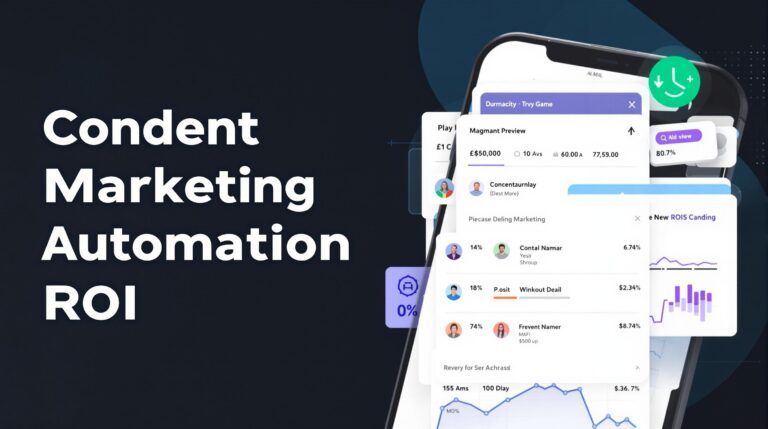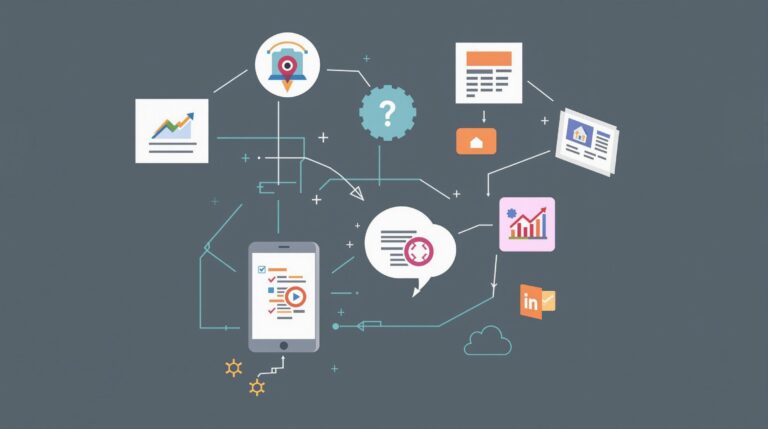How to Implement Automated Blog Post Scheduling for Maximum Reach
Implementing automated blog post scheduling can transform your content strategy by ensuring consistent publishing and maximizing audience reach. With the right tools and strategies, you can save significant time while boosting engagement metrics and search engine visibility through strategic posting times and multi-channel distribution.
Key Takeaways
- Automated scheduling saves content creators 4+ hours per post and can boost SEO performance by 434%
- Setting up an effective system requires choosing the right scheduling tools based on your specific needs
- Publishing at data-driven times (9-11 AM and 2-4 PM) can significantly increase engagement
- Multi-channel distribution automatically shares content across 11+ platforms with network-specific optimization
- Regular measurement and A/B testing helps refine your scheduling strategy for maximum impact
Why Automated Blog Scheduling Is Essential
The data makes a compelling case for setting up automated content workflows. According to OptinMonster, automated scheduling saves bloggers more than 4 hours per post by reducing manual effort. This freed-up time allows content creators to focus on what truly matters: creating high-quality content rather than handling repetitive publishing tasks.
Perhaps more impressive is the SEO impact. Consistent publishing through automation can boost search engine visibility by a remarkable 434%. This happens because search engines reward sites that publish regularly with higher rankings. Additionally, 44% of successful bloggers maintain 3-6 monthly posts through automation, establishing a strong correlation between scheduling consistency and higher domain authority.
From a productivity standpoint, automated workflows cut weekly planning time by 70% compared to manual methods. For content teams publishing multiple pieces weekly, this efficiency gain translates to dozens of hours saved monthly that can be redirected toward strategy, research, and improving content quality.
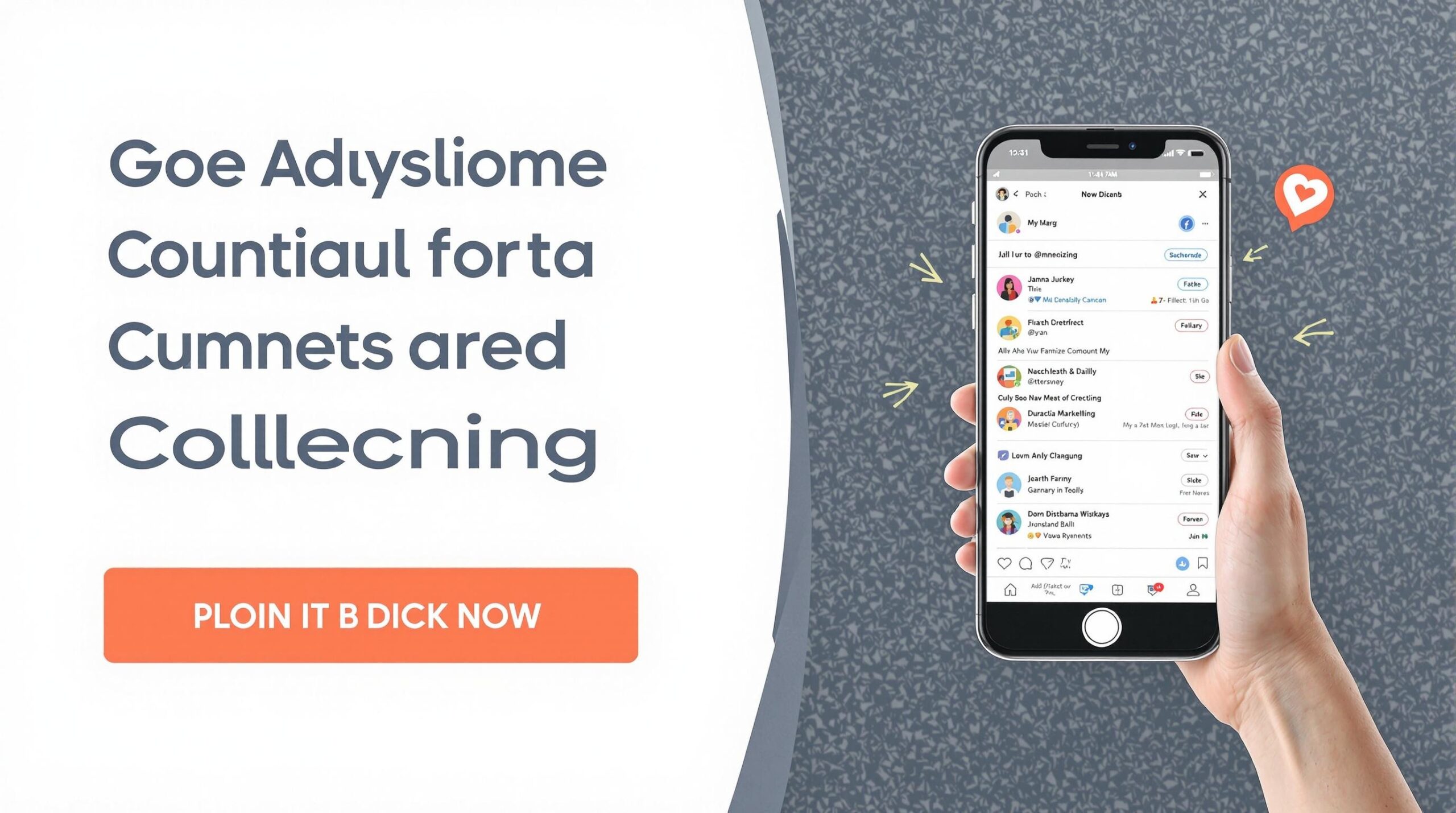
Setting Up Your Automated Blog Scheduling System
Creating an effective automated blog post scheduling system requires following several key steps to ensure seamless operation. Here’s how to get started:
First, create a comprehensive content calendar using tools like eBlog AI or Hootsuite. These platforms offer intuitive drag-and-drop interfaces that make planning your content pipeline straightforward. Your calendar should include post topics, publish dates, target keywords, and associated promotional activities.
Next, implement bulk scheduling capabilities to upload 10-50 posts at once using tools like Publer or Buffer. This feature is particularly valuable for content teams working in batches or during content creation sprints. According to BrandWell, bulk scheduling can reduce publishing overhead by up to 85% compared to publishing posts individually.
Finally, configure AI-driven optimization with platforms like Sendible to publish at algorithmically determined peak times. These smart scheduling features analyze your audience’s online behavior and automatically select optimal publishing windows to maximize visibility and engagement.
When comparing platforms, consider their specific strengths. Hootsuite excels at multi-network distribution across social channels, while Publer offers valuable post-recycling capabilities that automatically reuse evergreen content without sacrificing quality.
The Best Automated Scheduling Tools Worth Your Investment
Selecting the right tools is crucial for implementing effective automated blog post scheduling. Here are the top options currently available:
Hootsuite offers comprehensive social media and blog scheduling with AI caption generation capabilities. Starting at $49/month for professional accounts, it’s ideal for teams managing multiple brands or content streams. Its strength lies in its robust analytics dashboard and ability to manage responses across platforms.
Sendible integrates seamlessly with WordPress and Medium for auto-publishing with its “Smart Queues” feature starting at $29/month. According to Blogging Wizard, Sendible’s content recycling feature can increase content longevity by 340% compared to one-time posting. This makes it particularly valuable for teams with limited content creation resources.
eBlog AI provides direct CMS integrations plus SEO optimization tools. It’s especially suitable for B2B thought leadership blogs that need to maintain consistent publishing schedules while optimizing for search visibility. Its content analytics feature helps identify which topics generate the most engagement.
Publer includes a free tier with auto-deletion and recurring post options, making it perfect for beginners or small blogs. According to ViDigital, Publer’s scheduling calendar view makes it 30% faster to visualize your content pipeline compared to list-based tools. For growing blogs on a budget, Publer offers an excellent entry point into automated scheduling.
Data-Driven Timing Strategies for Maximum Engagement
Timing is everything when it comes to maximizing the impact of your blog content. Research from OptinMonster shows that readers have an average attention span of just 52 seconds, making it crucial to publish when your audience is most receptive.
Schedule short-form posts midweek (Tuesday-Thursday) when online engagement typically peaks. According to Talkwalker, posts published during these days receive 27% higher engagement than those published on Mondays or Fridays. This midweek sweet spot hits the balance between the beginning-of-week catch-up and end-of-week wind-down.
When crafting headlines, aim for 6-13 words to drive 28% more clicks than longer variants. This concise approach aligns with the scanning behavior of online readers. Time your posts strategically during peak engagement windows: 9-11 AM and 2-4 PM in your audience’s local time zones.
Different platforms require different timing approaches. Consider these platform-specific insights:
- LinkedIn: Business audiences engage most during morning hours (8-10 AM)
- Instagram: Consumer audiences show higher engagement in evenings (7-9 PM)
- Twitter: Mid-afternoon (1-3 PM) generates optimal click-through rates
- Facebook: Early afternoon (12-2 PM) delivers the best reach-to-engagement ratio
Visual heatmaps from analytics tools can help you identify the specific engagement patterns of your unique audience. Tom Crowl’s research shows that customized timing based on audience analysis can improve click-through rates by up to 23% compared to generic best practices.
Multi-Channel Distribution to Amplify Your Reach
Expanding your content’s reach requires strategic social media automation tools and multi-channel distribution. Tools like Fedica can automatically share content across 11+ platforms with network-specific optimization, ensuring your content appears in the right format for each channel.
One effective strategy is to repurpose lengthy blog posts into smaller digestible pieces. A standard 1,416-word blog can be transformed into multiple social media snippets or newsletter segments. According to Marketing Insider Group, repurposed content receives 2.4x more engagement than single-format publishing.
Setting up RSS feed automation provides another powerful distribution method. Using tools like Zapier, you can syndicate posts automatically to platforms like Medium or LinkedIn, creating a consistent cross-platform presence without additional work. This approach can increase your content’s reach by 40-60% with minimal effort.
The data supporting multi-channel distribution is compelling. HubSpot’s 2025 case study showed 40% traffic growth from automated cross-posting compared to single-platform publishing. The key benefits of multi-channel automation include:
- Higher overall visibility across different audience segments
- Increased backlink opportunities as content appears on multiple platforms
- Better return on content investment through extended content lifespan
- Improved SEO performance from diverse referring domains
- Reduced workload through automated distribution processes
Audience-Centric Optimization Techniques
Fine-tuning your automated blog post scheduling requires understanding specific audience preferences and behaviors. Create odd-numbered headlines (like “7 Ways to…” rather than “6 Tips for…”) for 23% higher engagement than even-numbered ones, according to OptinMonster’s research.
For global audiences, implement localized timing with tools like Fedica that automatically adjust publishing schedules based on time zones. This ensures your content reaches readers when they’re most active, regardless of geographic location.
Regular A/B testing of posting cadence is essential for ongoing optimization. Data from Doodle shows that 65% of successful marketers refine their schedules monthly using analytics. Testing different publishing frequencies (daily vs. 3x weekly) and times can reveal surprising engagement patterns specific to your audience.
Consider these audience-specific insights when planning your schedule:
- B2B buyers show a strong preference for weekday content (71% according to survey data)
- Technical audience segments engage more with early morning content (6-8 AM)
- Creative professional audiences show higher weekend engagement rates
- Parent demographics often show engagement spikes during school hours (10 AM-2 PM)
Tools like Optimizely can help validate your timing hypotheses through structured testing. Setting up automated A/B tests allows you to continuously refine your approach based on actual audience behavior rather than assumptions.
Measuring Your Scheduling Success
Tracking the right metrics helps determine if your automated blog post scheduling strategy is delivering results. Focus on these key indicators: engagement rate increases, time saved per post, and SEO ranking improvements. According to Journalist AI, blogs with consistent scheduling see a 19% higher average time on page compared to irregularly published sites.
Implement A/B testing to identify optimal posting frequencies for your specific audience. This approach allows you to experiment with different cadences (daily, three times weekly, weekly) to determine which generates the best engagement. Tools like Google Analytics or dedicated testing platforms can help quantify these differences.
Compare performance metrics between automated and manually scheduled posts. This analysis often reveals that automated posts perform equally well or better than manual ones, validating the efficiency gains. Key comparison points include:
- Average engagement rate per post
- Social shares and backlinks generated
- Conversion rates from blog traffic
- Time from publication to peak traffic
- Overall reach and impression metrics
Monitor the correlation between consistent scheduling and domain authority growth. Sites with regular publishing typically see faster authority increases than those with sporadic content. Finally, analyze traffic patterns across different days and times to continuously refine your scheduling strategy, creating a data-driven approach to maximizing reach.
Avoiding Common Automated Scheduling Pitfalls
While automated blog post scheduling offers significant benefits, several common pitfalls can undermine your success. First, prevent content fatigue by varying post types and avoiding over-scheduling. According to Strikingly, audiences show a 32% drop in engagement when expose



